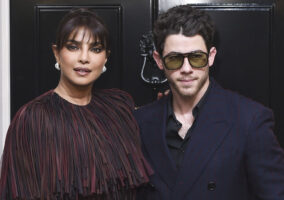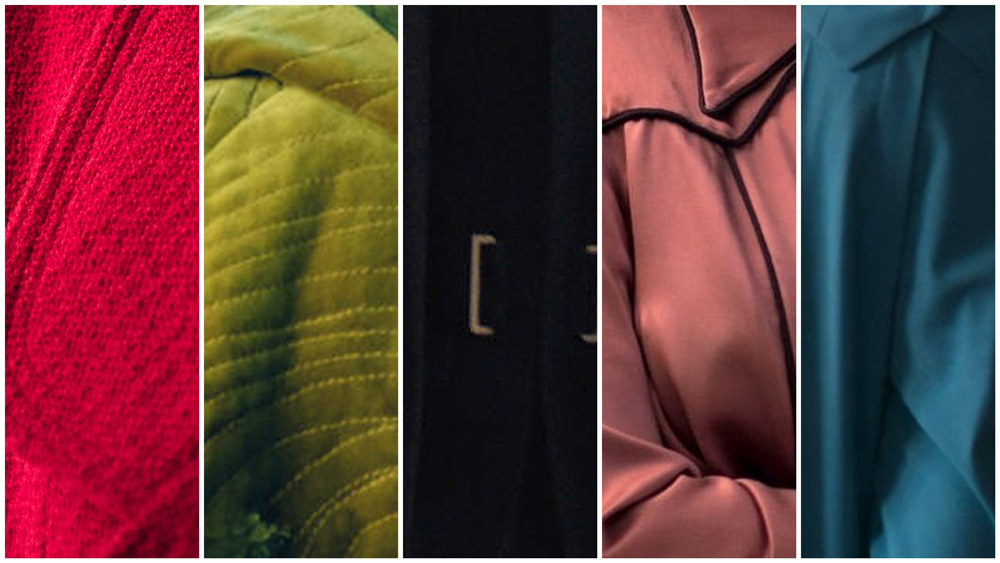
We spent the final days of 2021 arguing about movie costumes just so we could bring this list of our favorites to you. If you missed the first two installments, you can find them here and here. We’re not putting these costumes in any sort of order or even trying to group them according to theme. We just wanted to make sure that this list encompassed a broad range of styles and approaches to costume design. The only thing every look on this list has in common is that it was memorable enough to visually shorthand the entire film it appeared in.
Lucille Ball (Nicole Kidman) in Being the Ricardos
Costume Designer: Susan Lyall
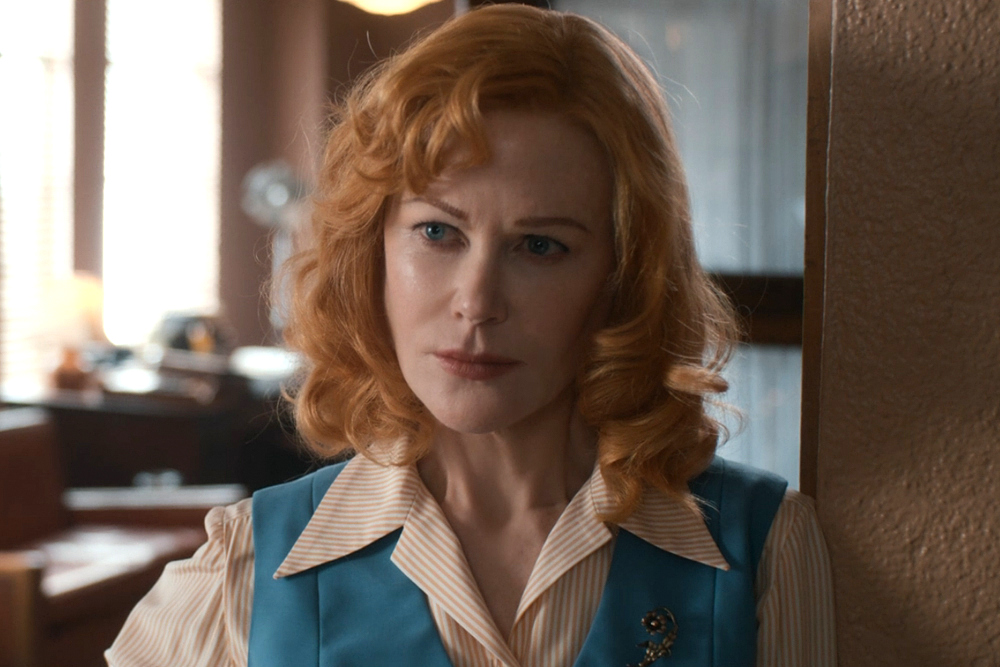
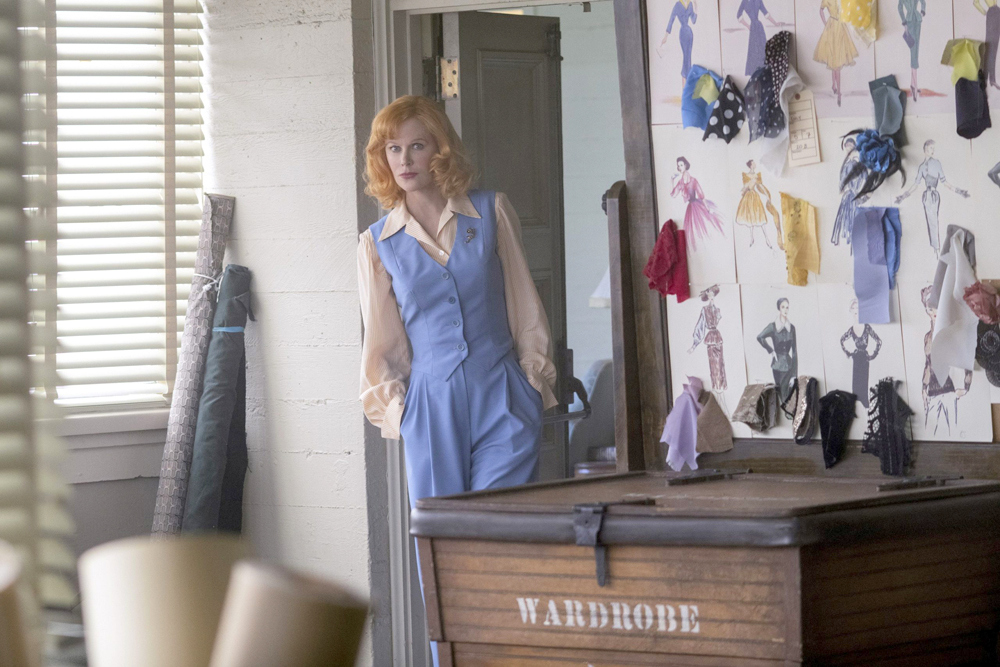
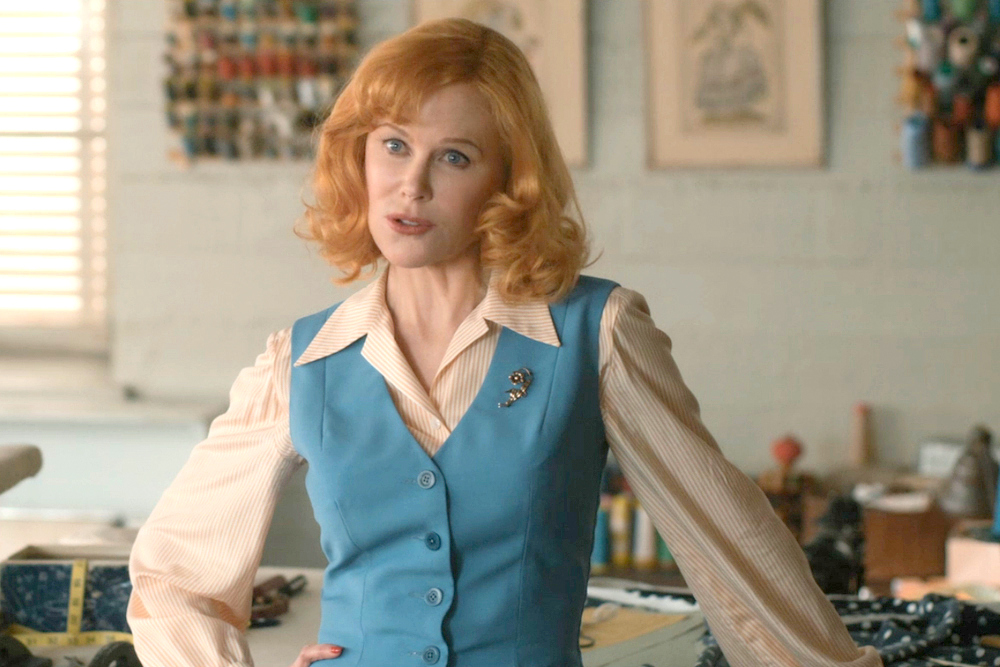
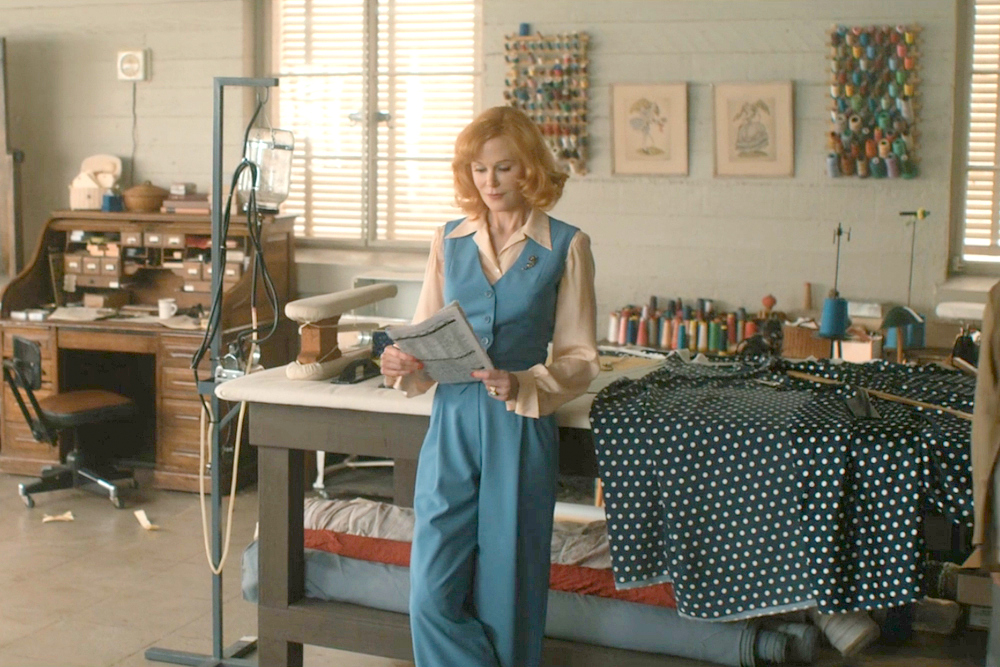
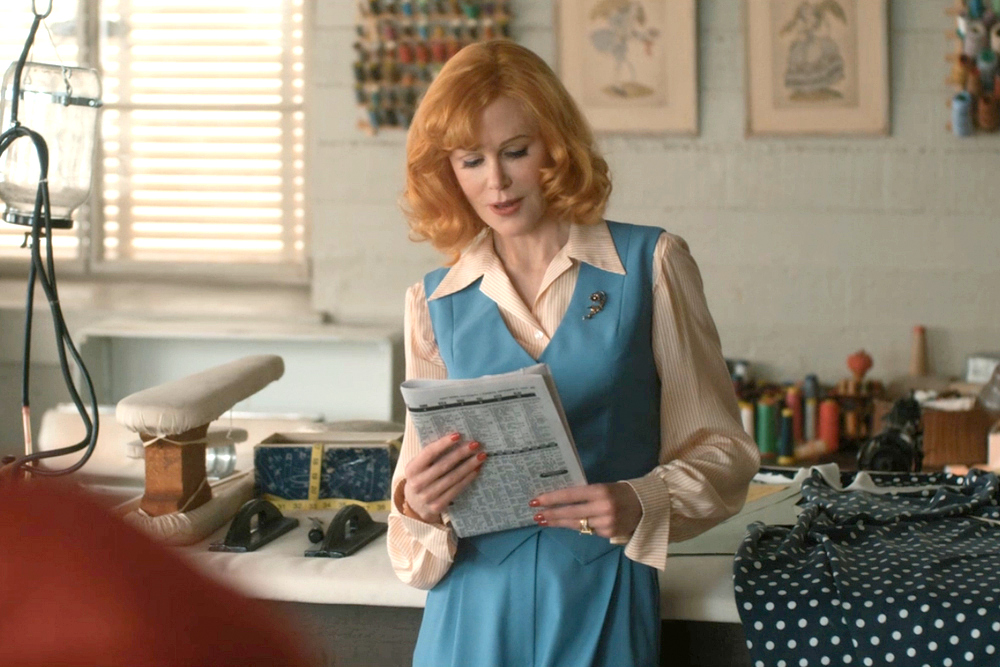
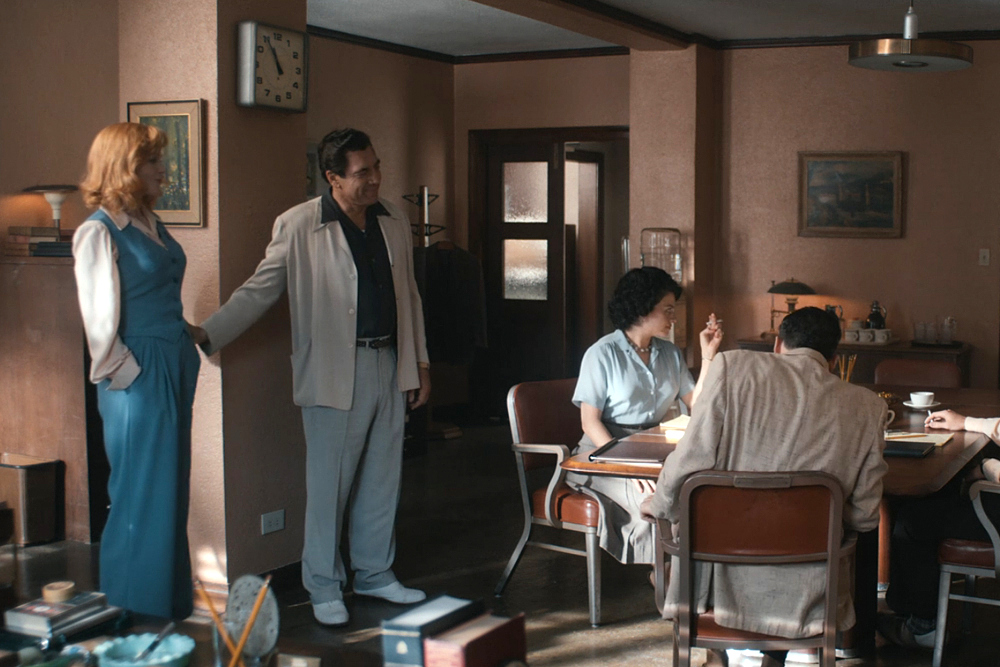
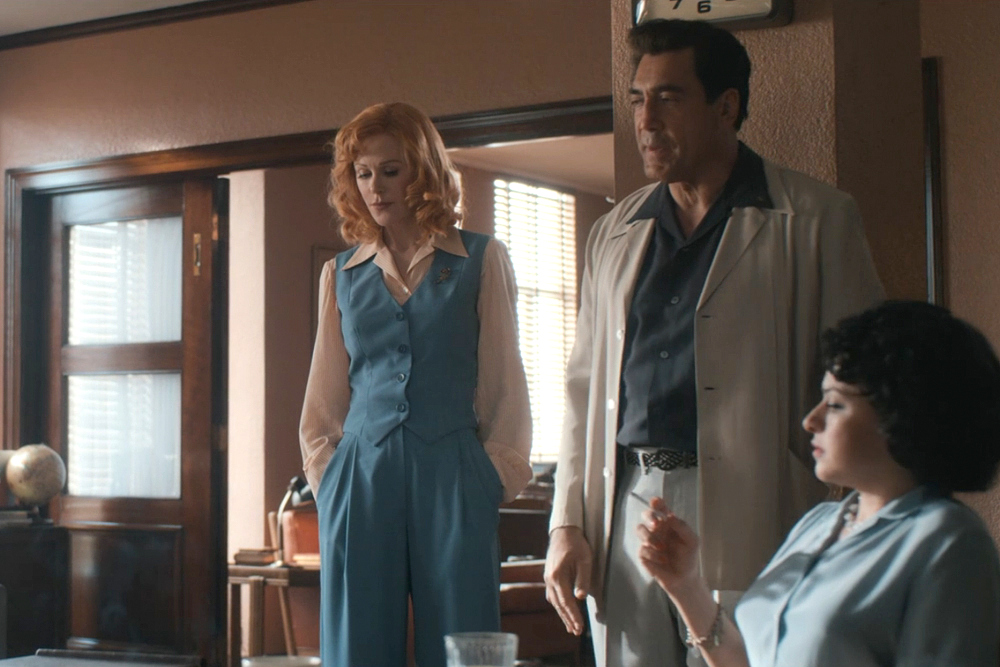
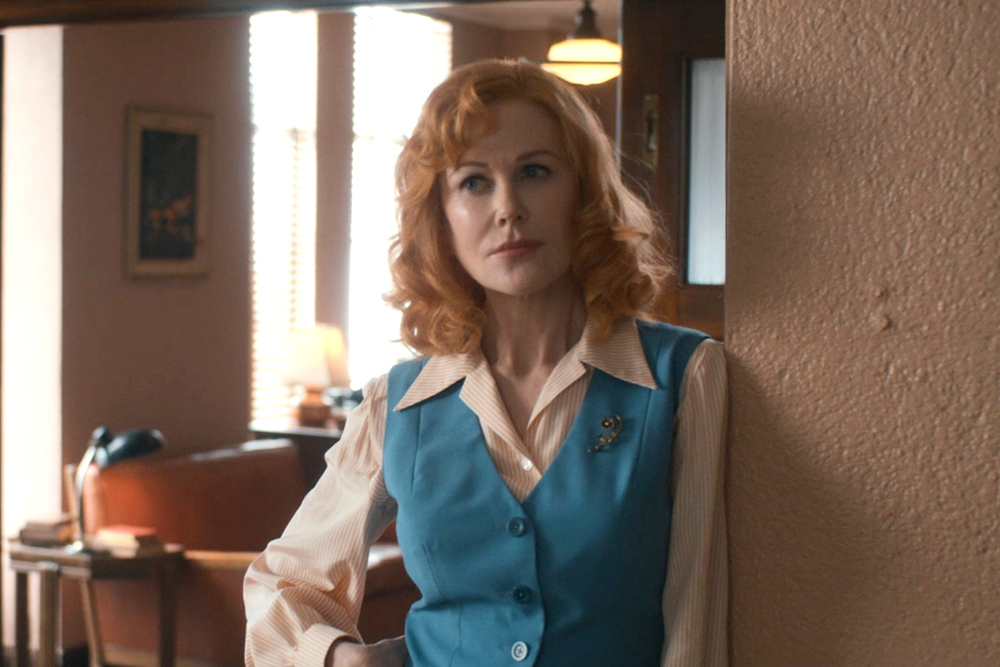
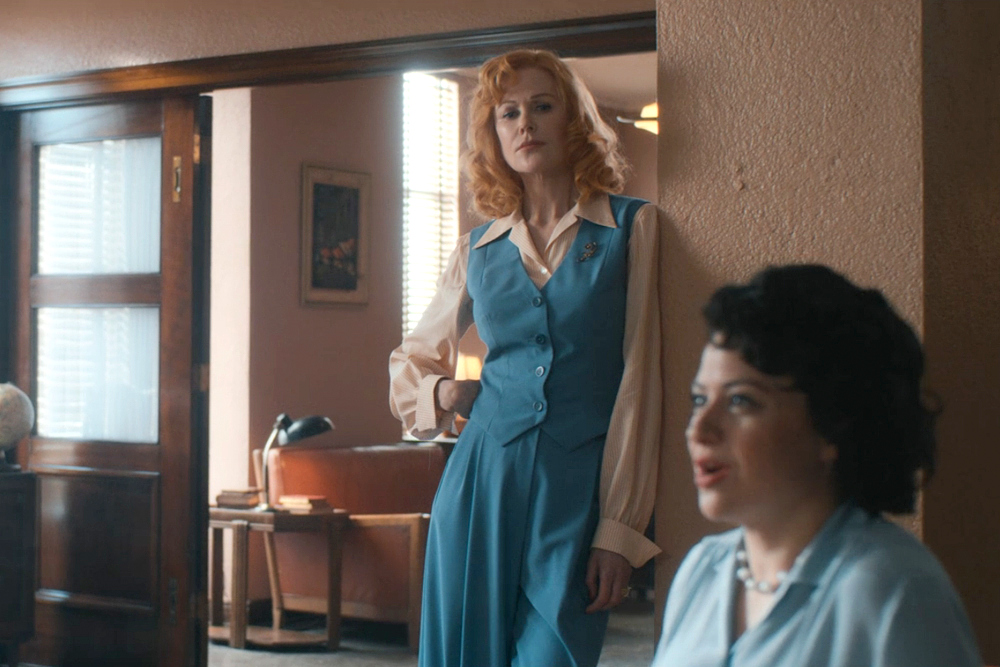

This is another one of those costumes that kept getting dropped from the list and then working its way back in. As a period drama surrounding iconic figures from classic Hollywood, you’d think Being the Ricardos would be quite the costume-fest, but it really wasn’t. Not to take anything away from Susan Lyall’s fine work in the film, but Aaron Sorkin is a director whose entire approach is centered around dialogue. He’s not what we’d call a visually oriented director. For a period film with so many scenes in nightclubs, on Hollywood soundstages, and in movie stars’ homes, the costume design was kept decidedly low-key and the film largely didn’t linger on any of them – except for this one. Evidently, it’s based on a real outfit Lucille Ball wore some time in the early ’40s. That’s part of what makes it so interesting to us. It’s a very strong look visually, which is as it should be for these scenes, in which Lucy is portrayed not only as commanding, but as something of a genius. They struggled mightily to find ways to make Nicole Kidman look appropriately Lucy-esque and we think this costume is when they got as close to it as they were ever going to get, largely because the color story plays up her orange hair and blue eyes perfectly on screen.
But what really makes this costume interesting is how it underlines points made in the script and tells you something about Lucy as a person. This ensemble would be considered the height of Hollywood Chic – nearly ten years before this film is set. The point here isn’t to suggest that Lucy’s old or out of style or even out of touch. Certainly, women like Katharine Hepburn never really stopped wearing pleated baggy pants and oxfords long after they made them fashionable. The point, as we saw it, was to underline Lucy’s history in Hollywood and her genesis as a starlet of the 1940s who never quite caught on as much as she should have. She’s strong and commanding, yes; but that’s because, as the film (and this costume) demonstrates, she’s been through some shit in Hollywood and knows how things work. She’s wearing her experience on her back.
Paul Atreides (Timothée Chalamet) in Dune
Costume Designers: Jacqueline West and Bob Morgan
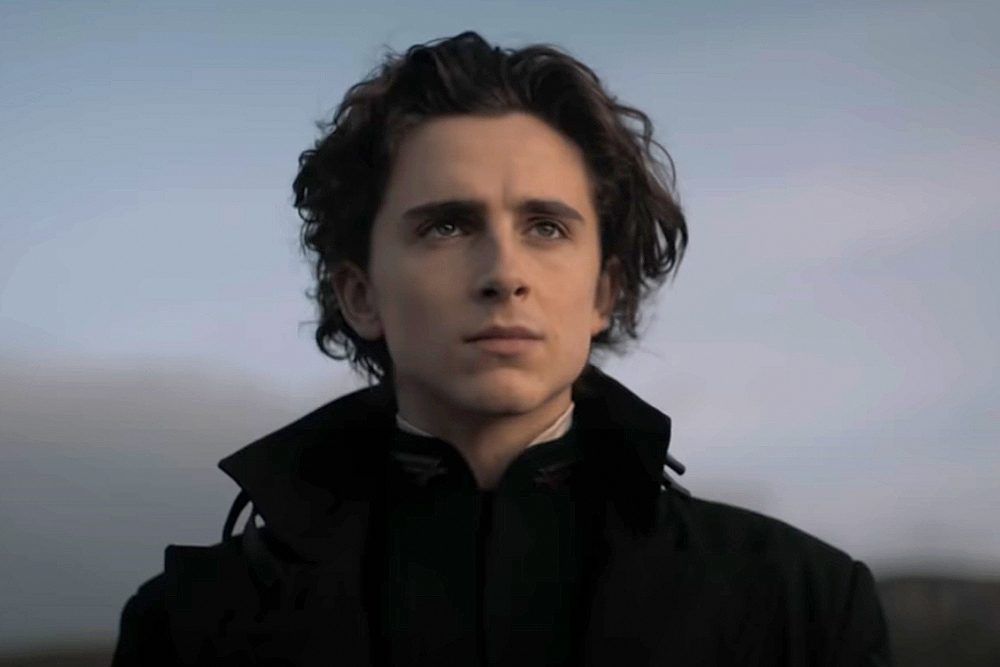
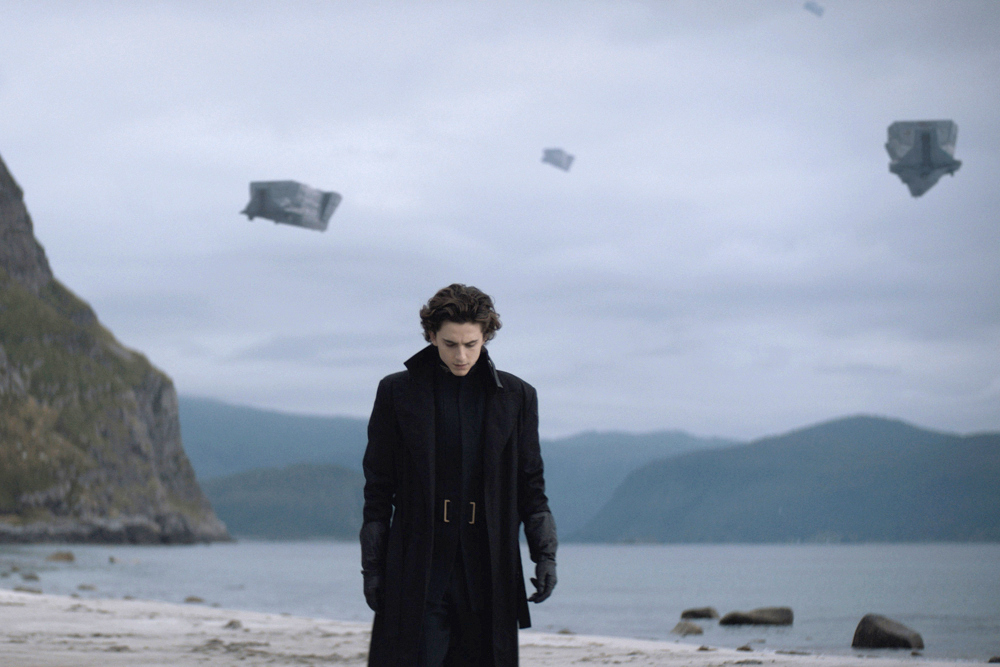
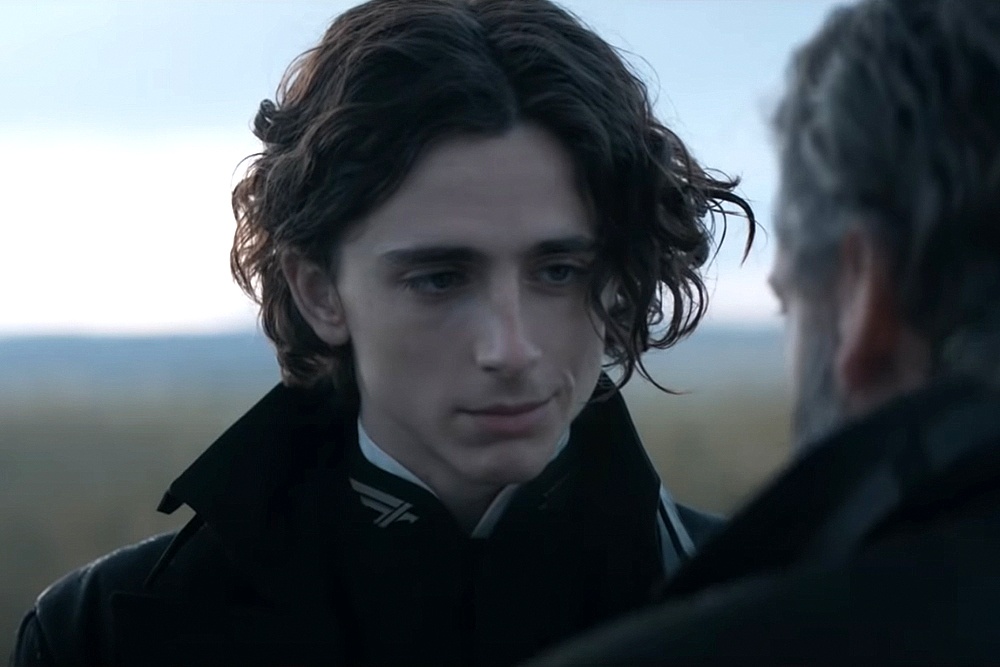
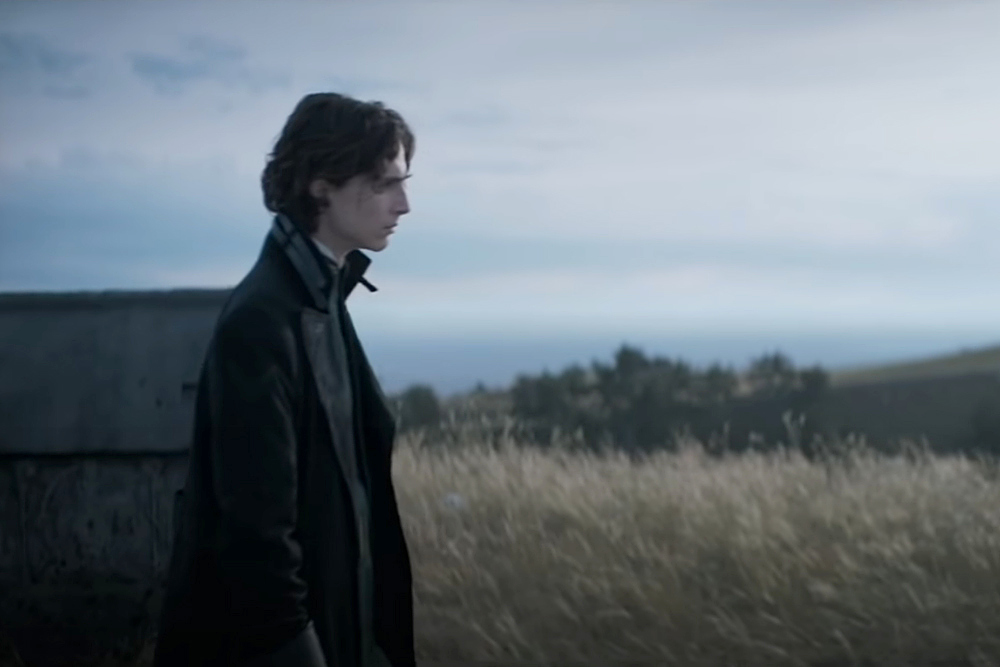
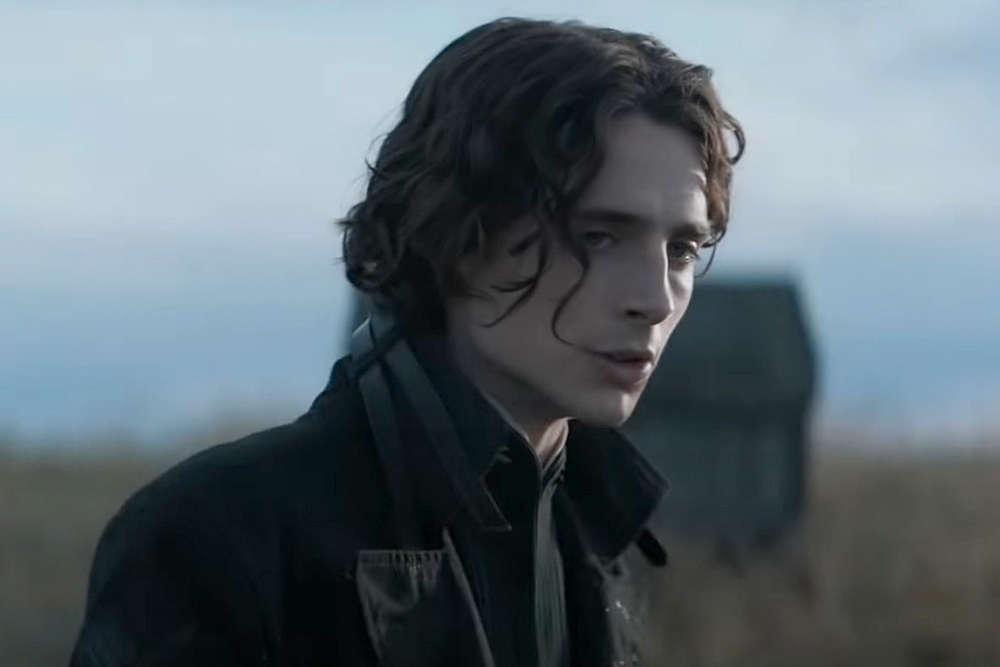
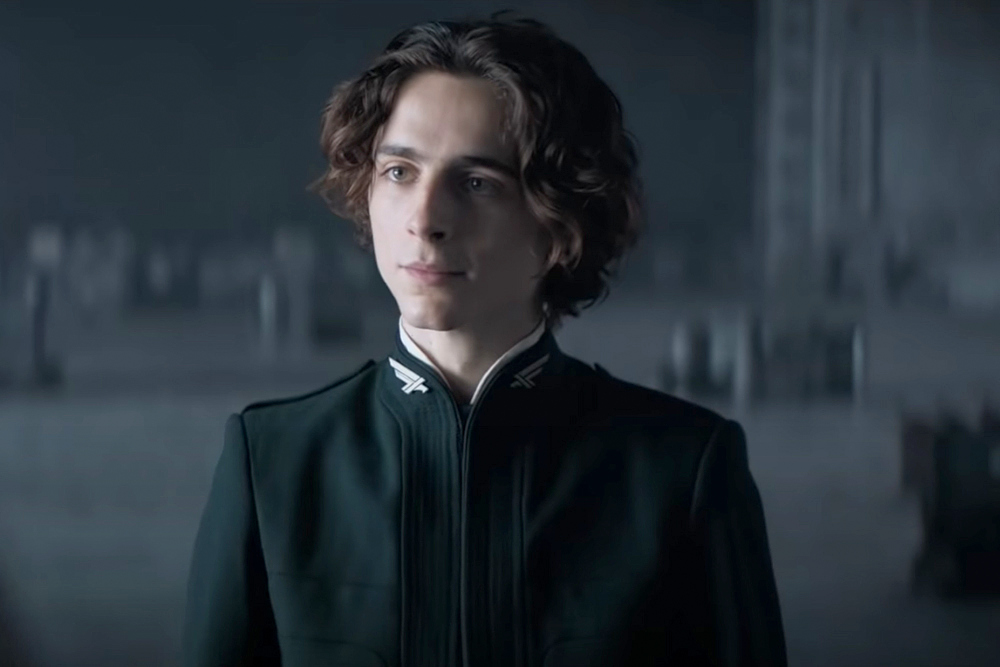
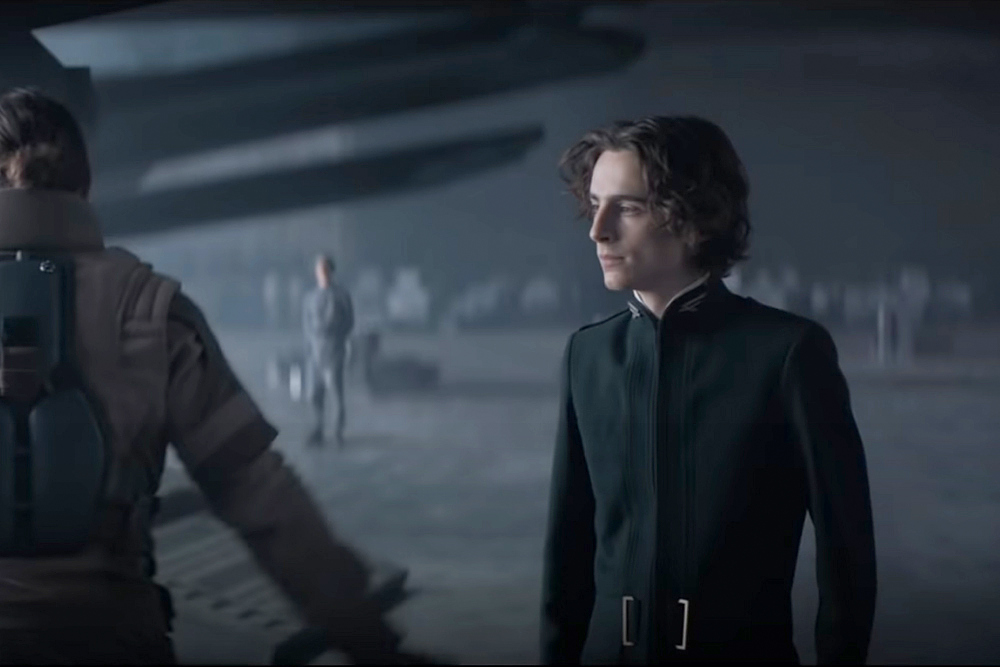

As Paul Atreides prepares to leave his home of Caladan to find his destiny on the desert planet Arrakis in Dune, we are treated to him pouting along the cliffs of his family cemetary in this absolutely gorgeous coat, which is on this list for the simplest of reasons: We wants it, Precious.
Okay, that’s not entirely true. While we have no problem admitting that we drool over this Space Prada coat, it’s also an interesting bit of costume design that supports the film’s overall Euro-chic science fiction aesthetic and tells you something about Paul and his house. There’s a cool, crisp, ’90s-style minimalism to the House Atreides uniform (worn underneath this coat), which looks a little like something Captain Picard might wear to a funeral. It’s such a clean, unfussed style that speaks to the family’s low-key sense of confidence and security. A dress uniform rather than a combat one. When you add that coat, with it’s massive upturned collar, and add those gigantic leather gloves, it not only looks cool as hell, but it says a little about the somewhat pampered and sheltered life of the young heir. The oversized elements all emphasize Chalamet’s smallness and youth, giving him a sort of “Le Petit Prince” feel, which seems deliberate to us. We see a man of tremendous privilege, who’s lived a sheltered life and seems overwhelmed and unready for the trappings of his destiny. A boy in a grown man’s coat; a prince not ready to wear the king’s raiment.
Princess Diana (Kristen Stewart) in Spencer
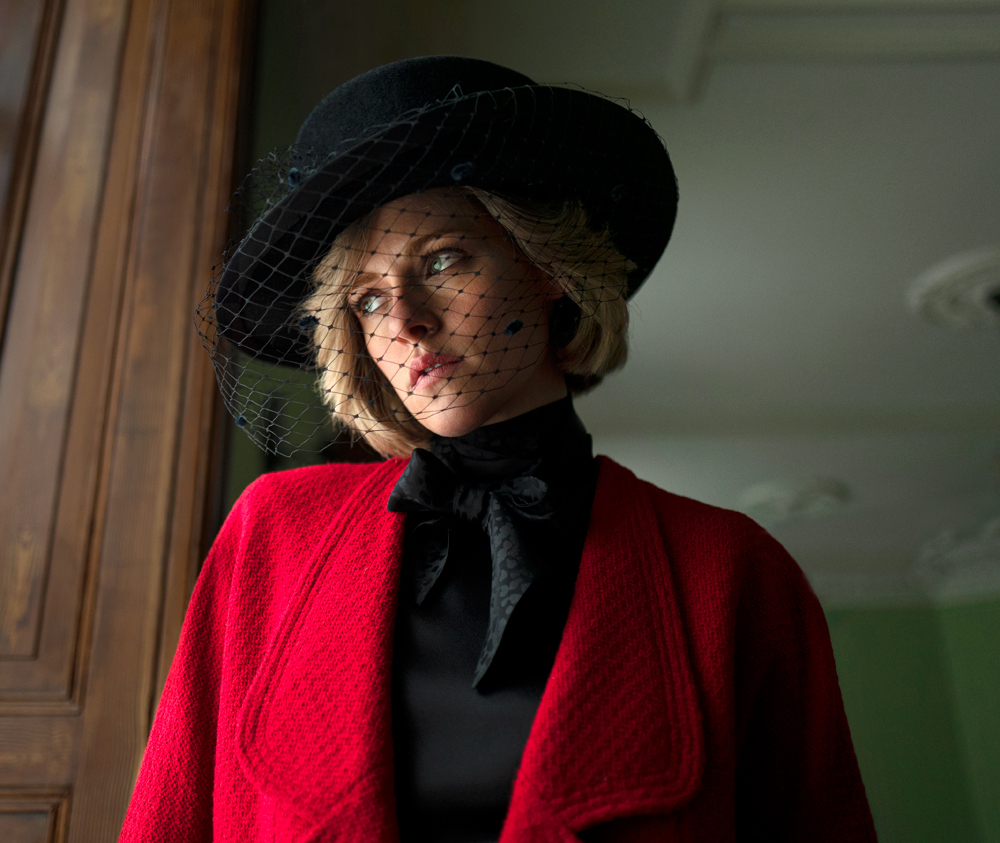
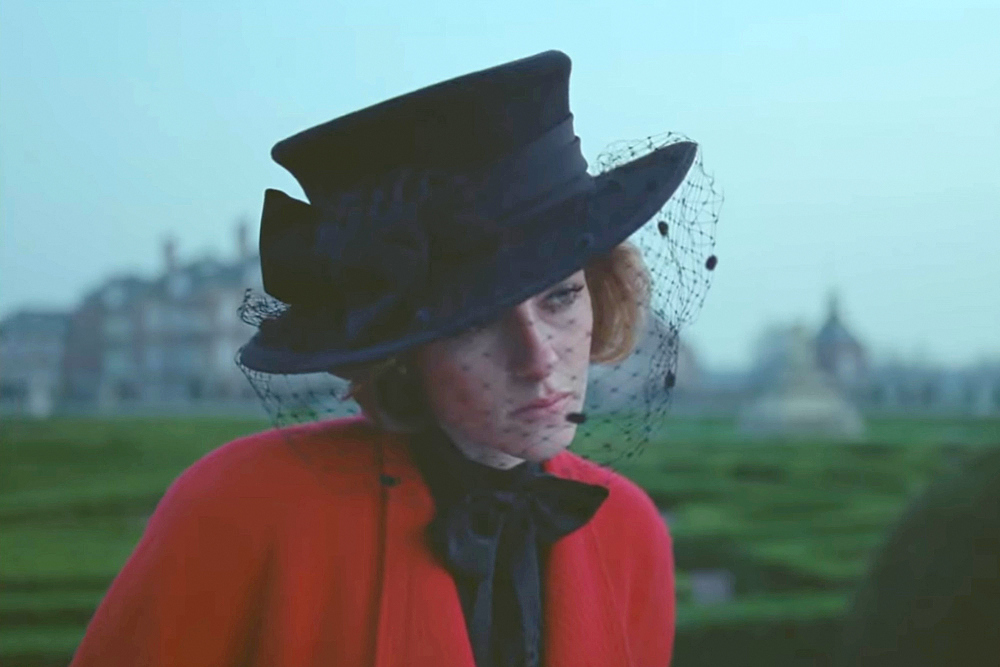
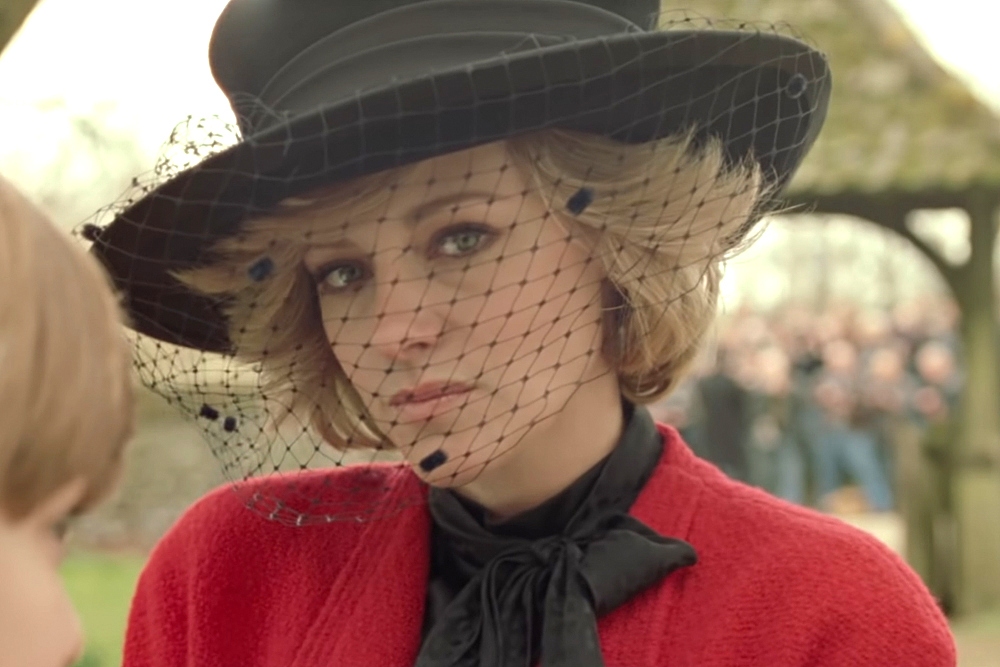
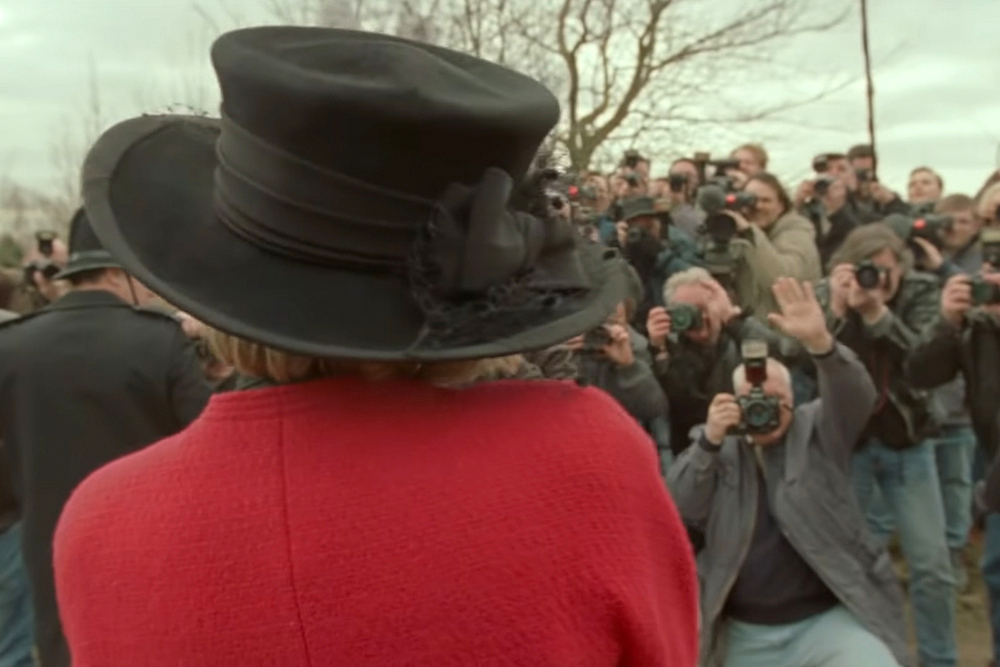
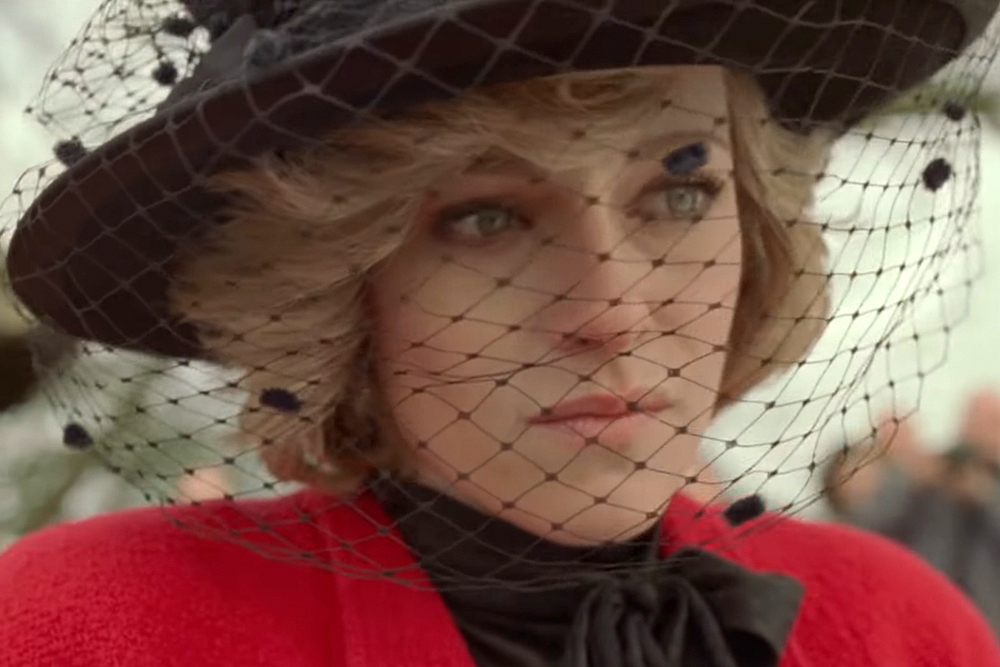
Spencer took a highly impressionistic approach to depicting Princess Diana’s life and personality, eschewing a lot of biopic conventions to give the audience more of a psychological horror film than an actual depiction of the events of a person’s life. We think it worked quite well in conjunction with Kristen Stewart’s own impressionistic take on the Princess of Wales, which sometimes approached pure mimicry and at other times seemed to find something deeper that connected the actress to the woman. The costume design of the film didn’t attempt one-to-one recreations of Diana’s outfits; an approach that fit well with its impressionistic style and also allowed the film to free itself from the bondage of visual accuracy in order to explore themes and visual motifs. There’s a reason this was the first image released of Stewart in the role. While it may not have shut all the doubters up, it more than makes its case for her as Diana. It just feels right because it seems to sum up something about her. This look is actually fairly close to something Diana wore around this time, but what’s more important to us is how it gets to the heart of our understanding of who Diana was. If you reduce the woman down to one image, a pretty young face trapped behind a net in front of a wall of cameras will do pretty damn well. It’s one of those costumes that’s essentially the entire point of the film in one outfit. She’s trapped, sad, and beautiful.
Rose Burbank (Kirsten Dunst) in The Power of the Dog
Costume Designer: Kirsty Cameron
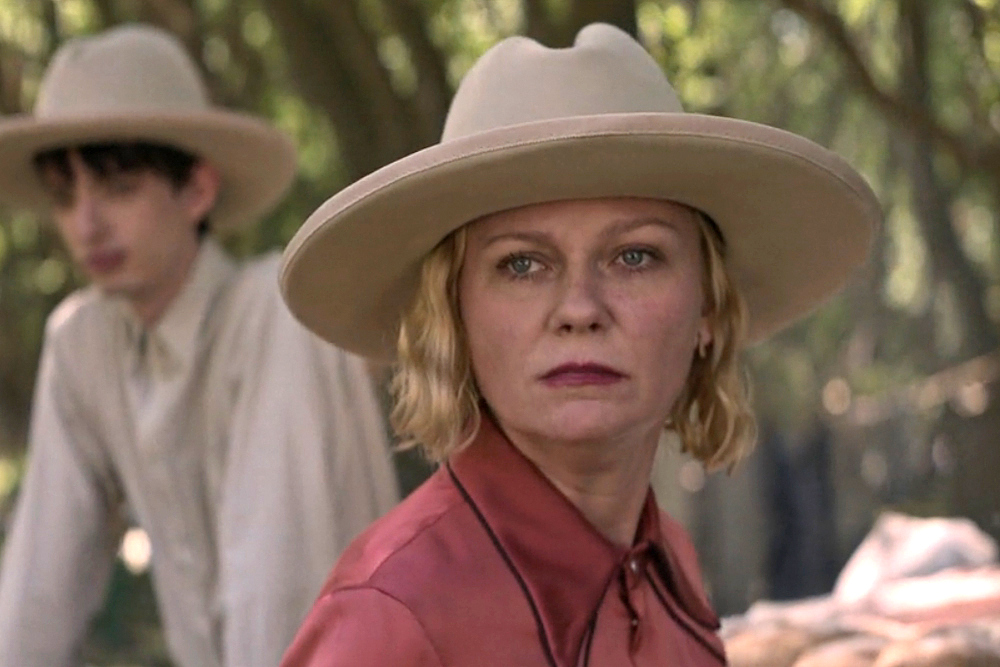
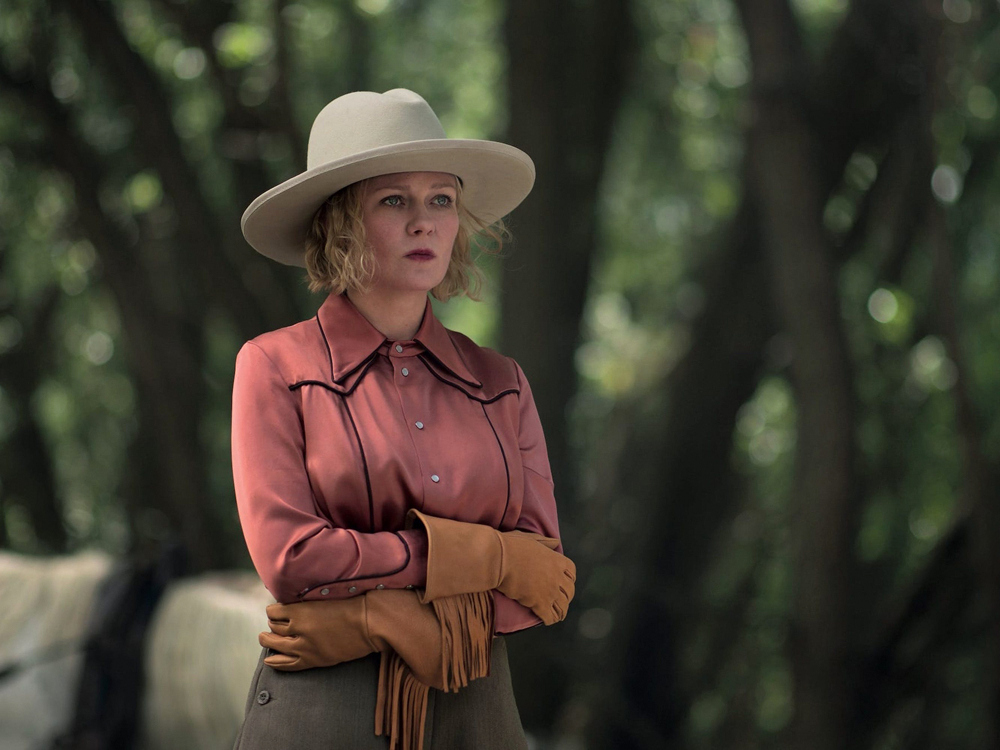
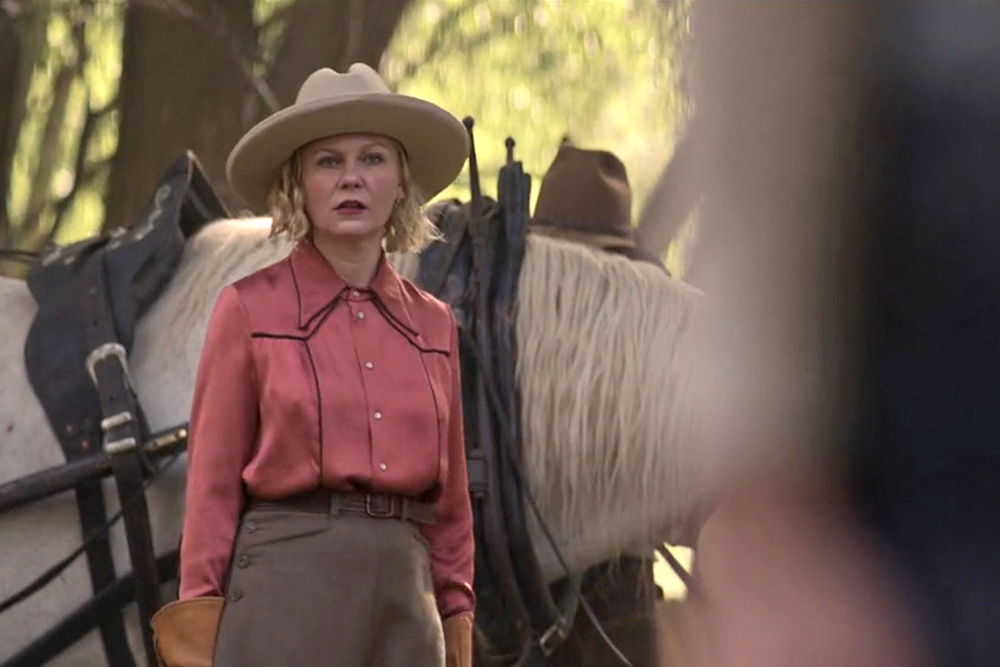
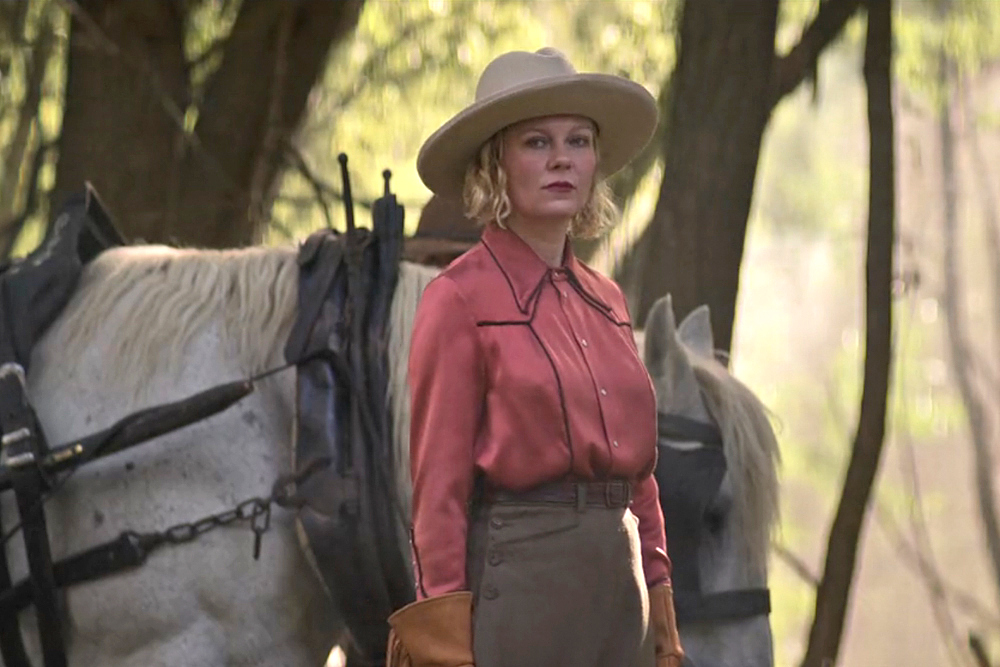
Of the many things we loved about The Power of the Dog, we think the year in which it was set may be one of the more important, in terms of the themes and the look of the film. Set in 1925, it’s a time just long enough past the late 19th century golden age of the cowboy mythology that the characters understand that mythology even as they’re living in the vestiges of it; a time when a rancher could spend his work days living that 1880s lifestyle and then go into town and catch a western glorifying it at the local movie theater. It’s a time when Phil Burbank (Benedict Cumberbatch) understands that the glory days are past, that his icons are dead, and that his world is being taken over by people who don’t belong and don’t understand it. Poor Rose, who’s been tortured by his toxicity from the day she married his brother, shows up at the rancher camp wearing this mockery of his own work clothes; rendered in pink silk no less. For a man with as many masculinity issues as Phil, it must have seemed like the highest insult imaginable. She couldn’t have picked a worse sort of outfit to wear in front of him; waving the flag of her own dilettantism and announcing loud and clear how little she belongs. It’s a relatively cute, stylish look that plays on the idea that old west fashion has become chic (which was largely true around this time), but in Phil’s eyes, it just reinforces the idea that she’s a silly woman who mocks his way of life. For poor Rose, it was just another of her failed attempts to fit in and a clear example of how little she understands where she is. This costume kind of breaks our hearts a little. Her sad little cowgirl outfit.
Gawain (Dev Patel) in The Green Knight
Costume Designer: Malgosia Turzanska
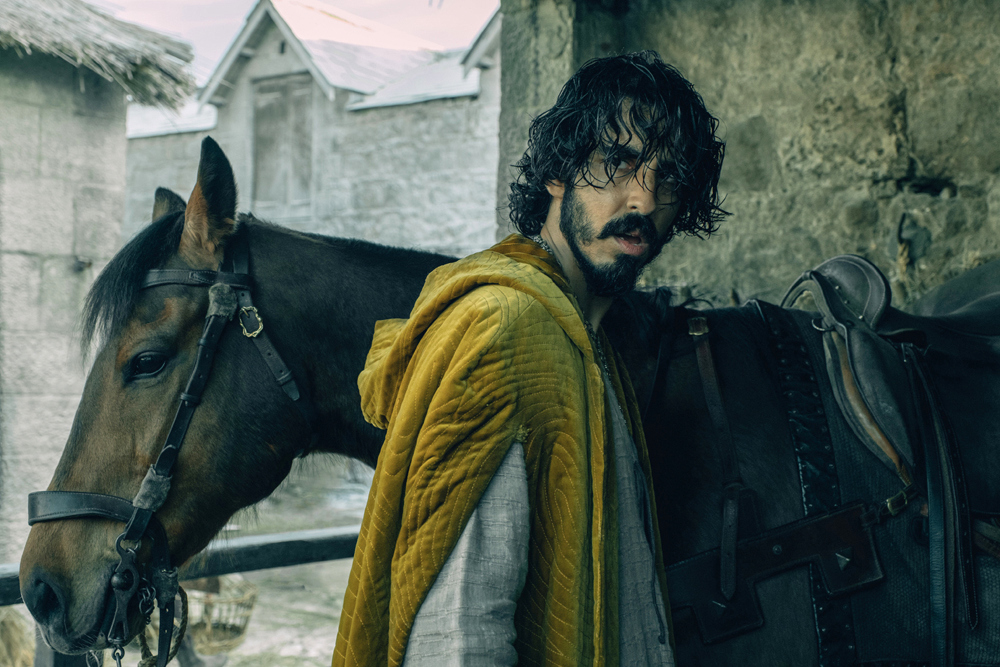
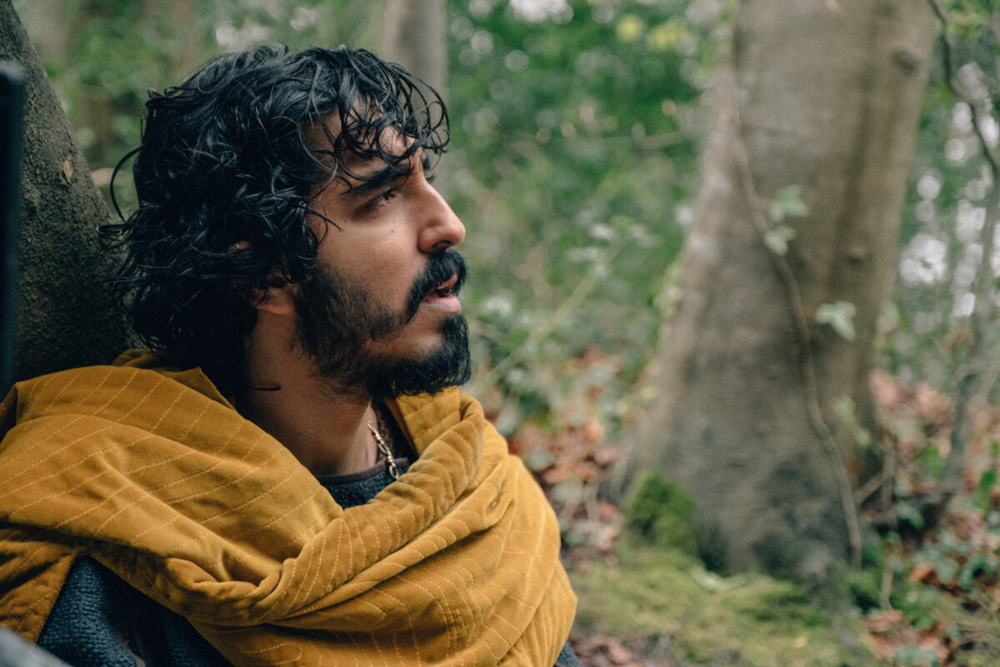
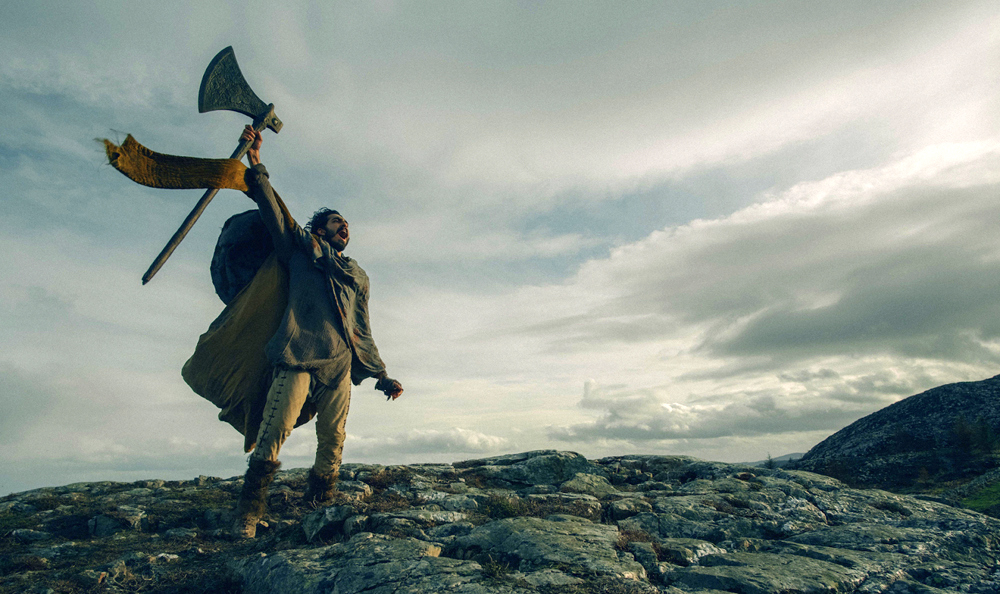
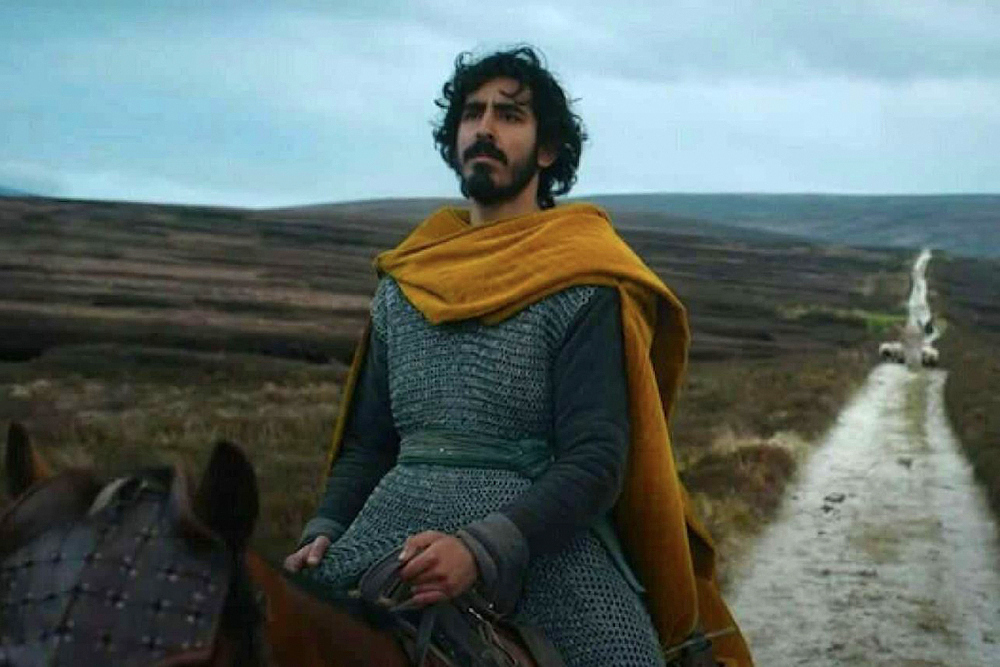
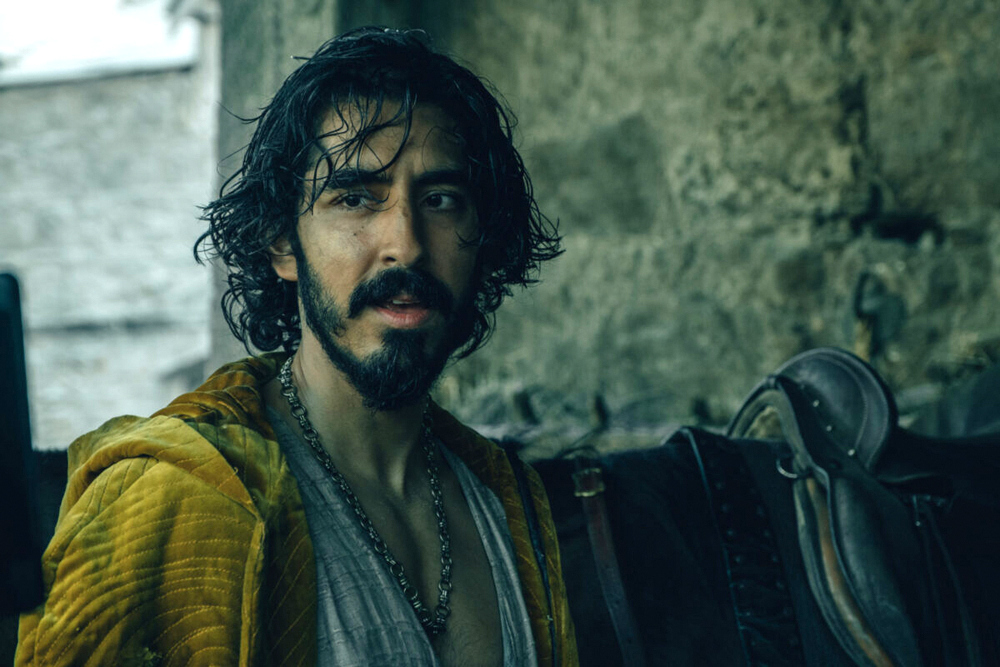
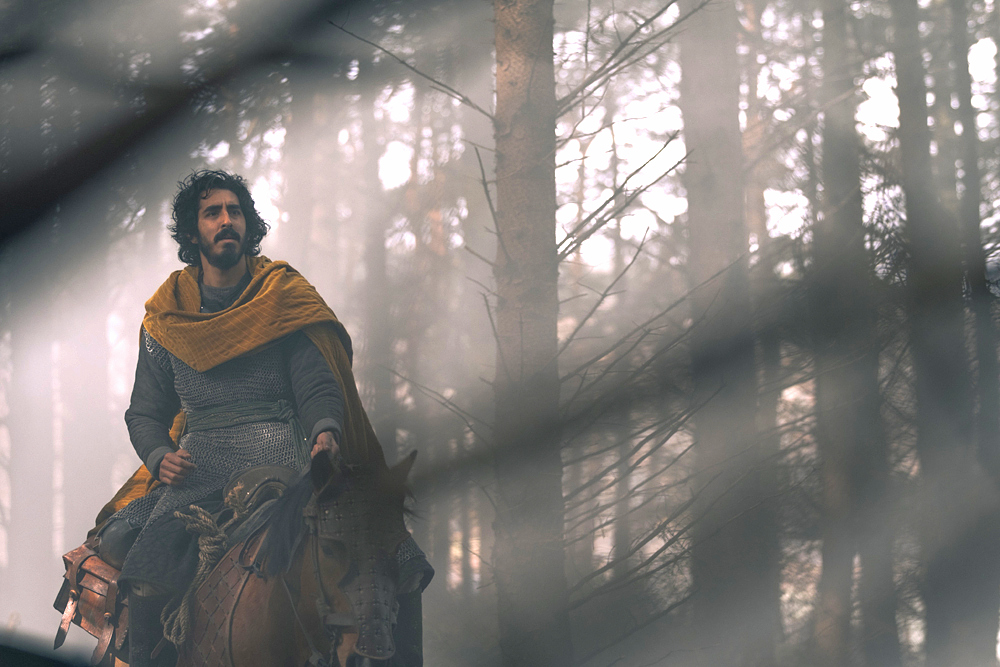
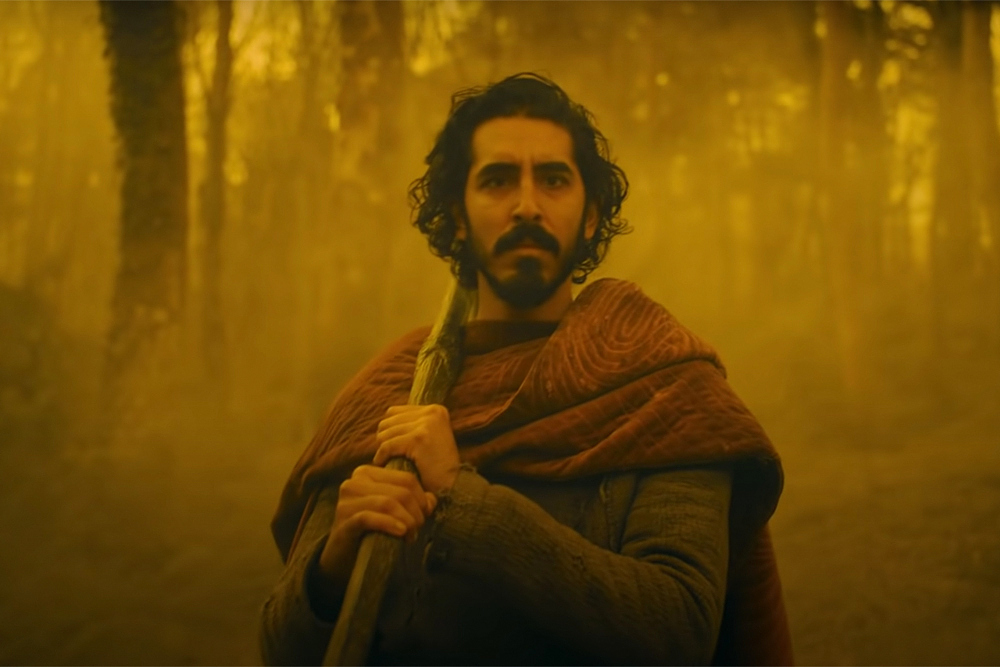
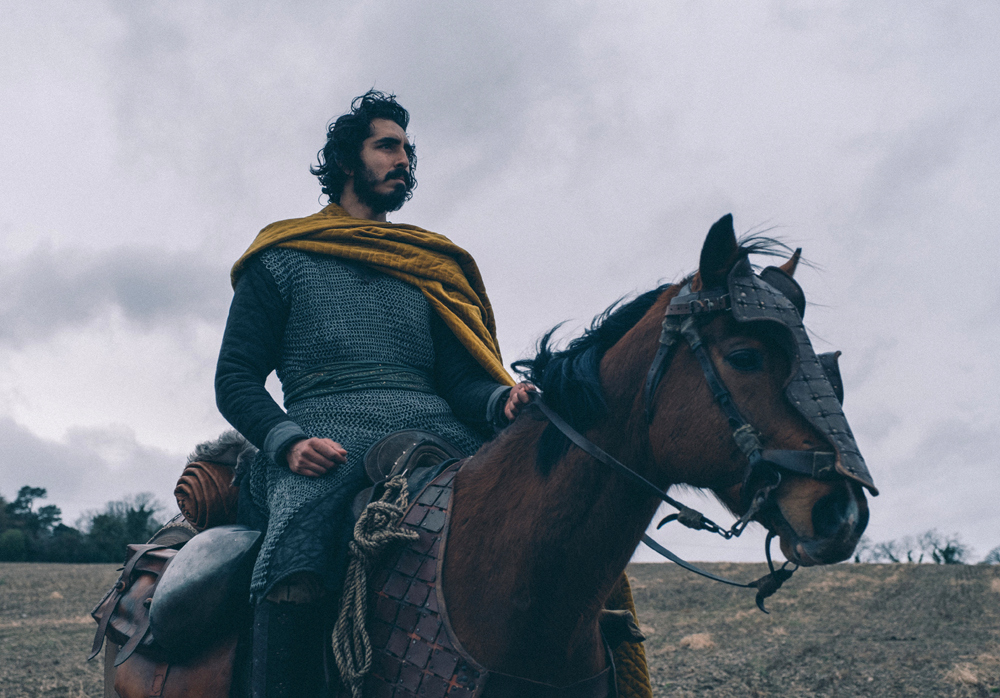
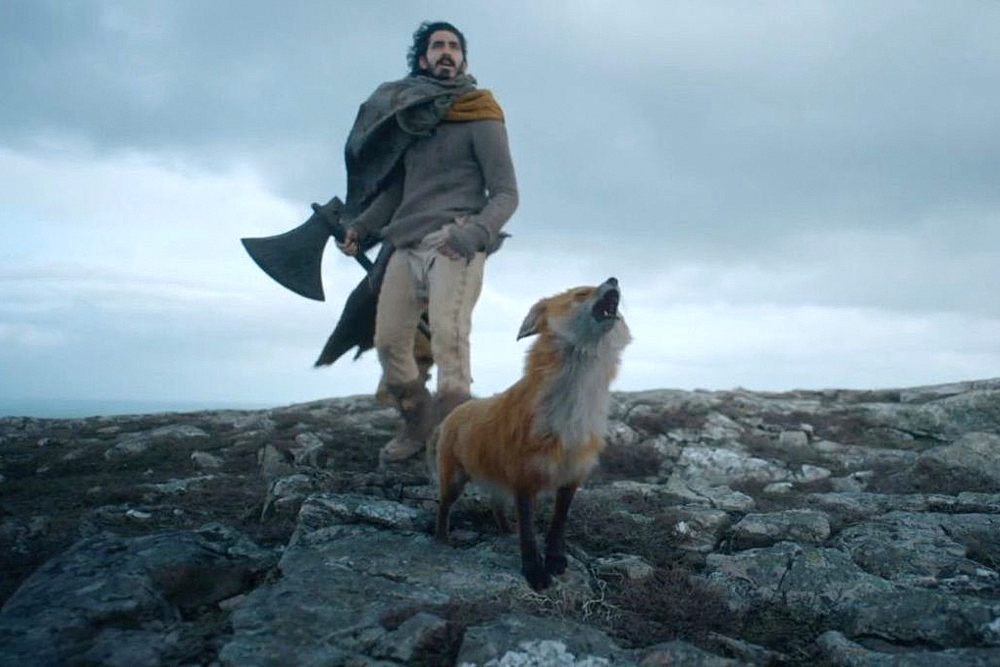
Okay, we lied just a little. We said this list wasn’t a countdown or an award – and it’s not – but we did save this one for last because it is our favorite film costume of the year, by far. And the funny thing is, the publicity shots and screenshots don’t quite do it justice. Literally every costume in The Green Knight was gorgeously compelling in some way and if we were less inclined to shake things up and make some larger points about the various approaches to costume design, we might have populated this list entirely with examples from this film. But Gawain’s saffron yellow cloak stands out above all the rest for being humble and powerful at the same time, which supports the themes of the film and the character of Gawain himself. It speaks of a richness and privilege; a garment for a boy so soft, his mother will put his life at risk in order to make him a worthy man. But it also has a humility to it, as he literally drags it through the mud and carries it on his back through every test and challenge he’s put through; sometimes it shines like a kingly cloak and at others, it looks like a dingy shroud. It can make him look as noble as a figure on a tapestry or as wild as a thief in the woods, depending on the lighting and circumstances of the story. Costume designer Malgosia Turzanska often took a wildly impressionistic approach to the costumes in this film, seeming largely unconcerned with history or even conventional fantasy tropes, while at the same time producing looks that just feel right; old and powerful and riddled with magic and symbolism. It may not register consciously when you look at it, but the quilting of this cloak is done in a thumbprint pattern, a bit of gorgeous visual richness that speaks of identity and genetic destiny; two of the larger, more important themes of the film. That’s just brilliant, intelligent, aesthetically satisfying costume design at its very best.
[Photo Credit: Amazon Studios, Warner Bros. Pictures, Neon, A24, Netflix]
Our Favorite Movie Costumes of 2021: Part Two Next Post:
Yea or Nay: Moschino Color Block Enver Satin Dress
Please review our Community Guidelines before posting a comment. Thank you!

